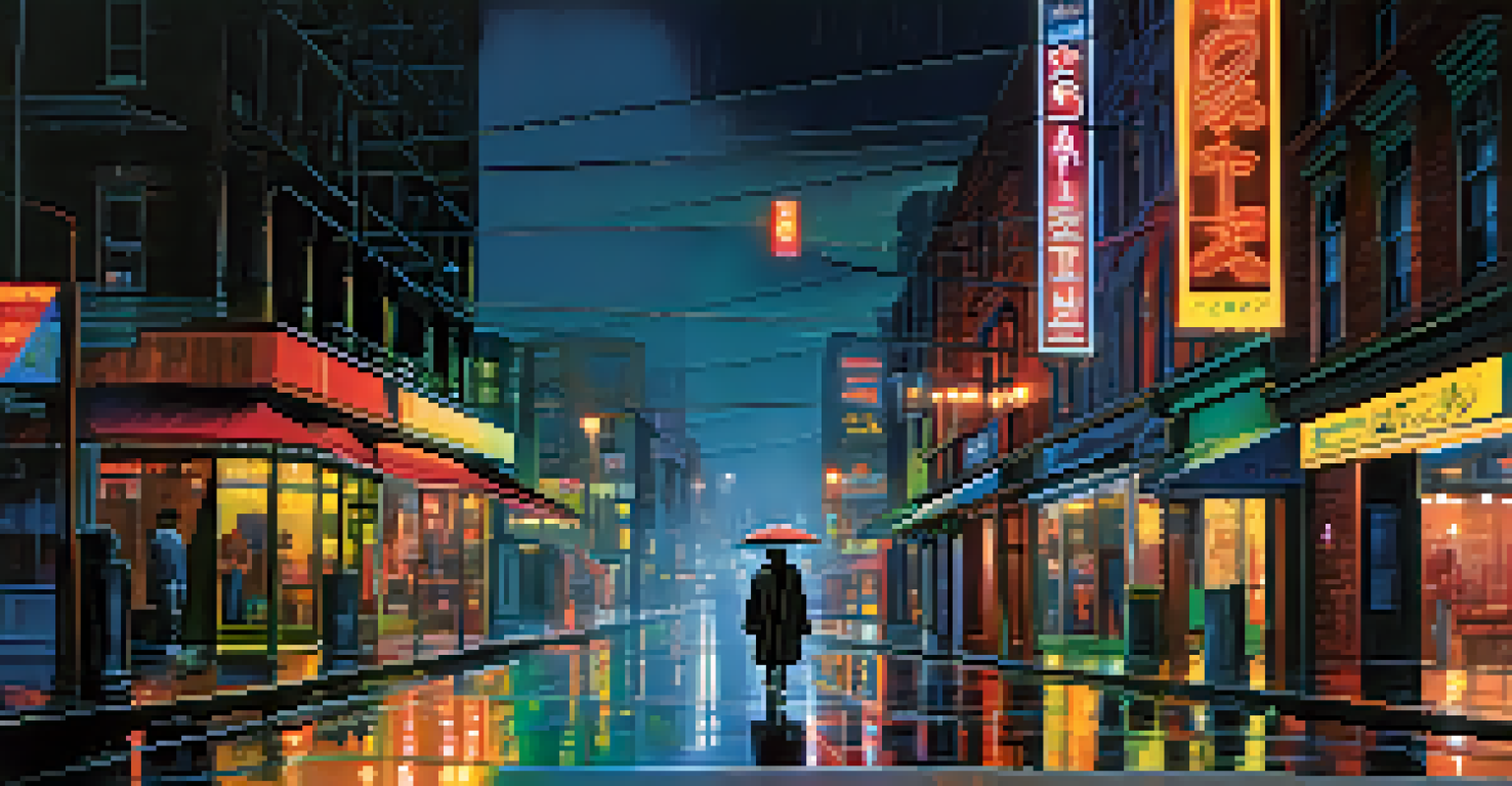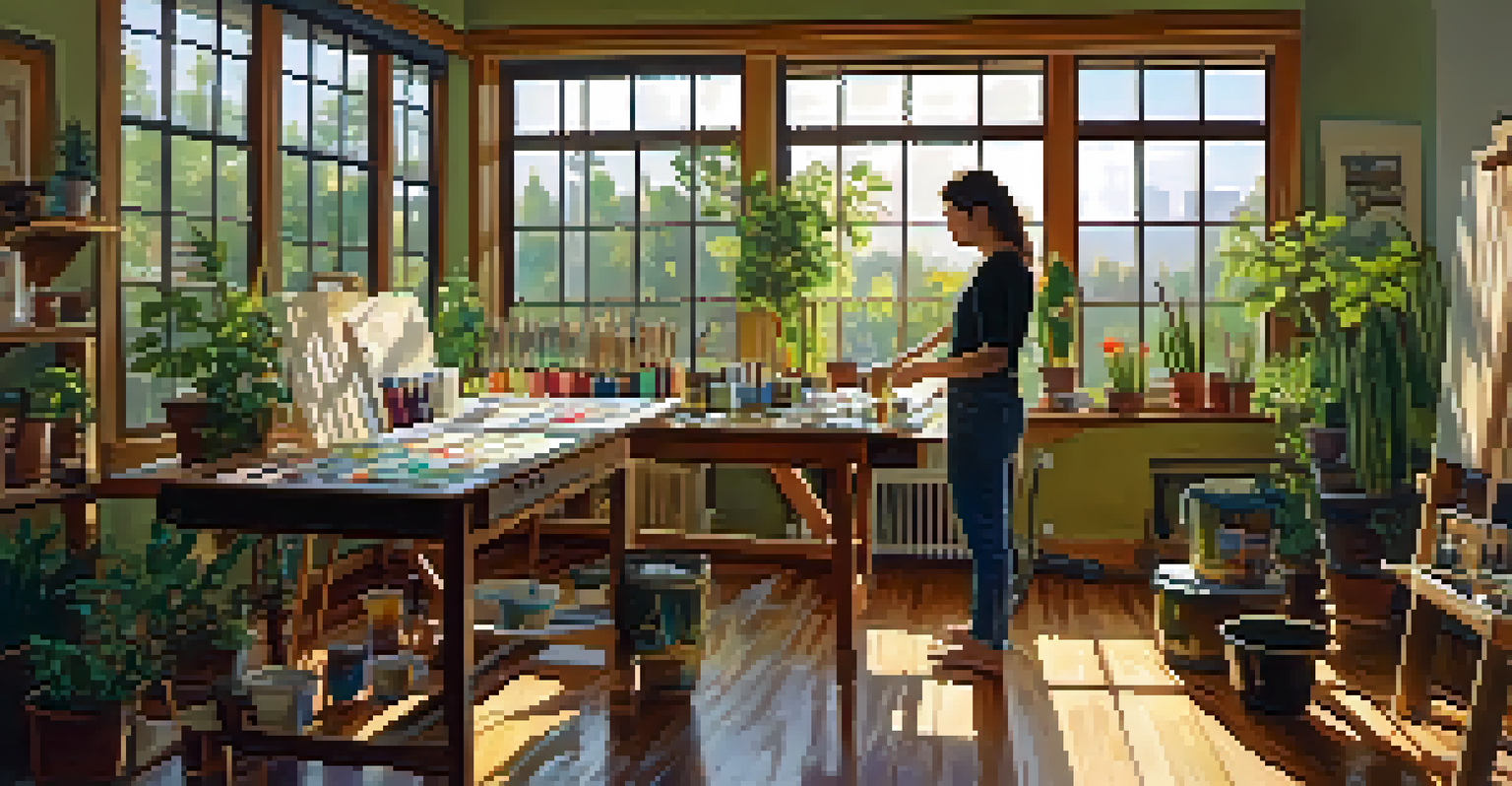The Role of Natural vs Artificial Light in Cinematic Storytelling

Understanding Natural Light in Film Production
Natural light, often sourced from the sun or moon, plays a significant role in film production. It creates authentic atmospheres, allowing audiences to connect emotionally with the narrative. Filmmakers often favor natural light for its ability to produce soft shadows and vibrant colors, which can enhance the overall visual appeal of a scene.
Natural light is the most important tool in the filmmaker's toolkit. It creates drama, mood, and a sense of authenticity that artificial light often can't replicate.
By utilizing natural light, directors can craft a sense of realism, grounding viewers in the story's world. Think of iconic films like 'The Revenant,' where the natural landscape and lighting become characters in their own right. This approach not only immerses viewers but also adds depth to the storytelling.
However, working with natural light can be unpredictable due to changing weather conditions and time of day. This challenge can lead to creative solutions, forcing filmmakers to adapt and innovate, ensuring that every shot remains compelling and visually engaging.
The Power of Artificial Light in Cinematic Techniques
Artificial light, created through lamps, LEDs, or other lighting equipment, offers filmmakers greater control over their visuals. It allows for the manipulation of mood, tone, and atmosphere, providing the flexibility to craft specific scenes to evoke desired emotions. For instance, using harsh lighting can create tension, while soft lighting can evoke warmth and intimacy.

Consider the use of artificial light in films like 'Blade Runner,' where neon lights and shadows create a dystopian future. Here, lighting is not just a tool; it’s a vital part of world-building. The strategic placement and intensity of artificial light can highlight a character’s emotional state or foreshadow events, making it an essential storytelling device.
Natural Light Enhances Authenticity
Natural light creates genuine atmospheres that allow audiences to connect emotionally with the narrative.
Moreover, artificial lighting opens up opportunities for creativity, allowing filmmakers to simulate different times of day or even fantastical environments. This innovation in lighting techniques has led to groundbreaking visuals in modern cinema, encouraging audiences to explore new realms of imagination.
Natural vs. Artificial: The Emotional Impact on Viewers
The choice between natural and artificial light can significantly affect the emotional response of viewers. Natural light often brings a sense of authenticity and realness, making audiences feel more connected to the story. On the other hand, artificial light can enhance or manipulate emotions, creating a more dramatic effect that can leave a lasting impression.
Lighting is about creating moods and enhancing emotions. The right light can elevate a scene from ordinary to extraordinary.
For example, the use of warm, golden hues in a romantic scene can evoke feelings of love and nostalgia, while cold, stark lighting in a thriller can induce fear or anxiety. Filmmakers strategically use these lighting choices to guide viewers' emotions, ensuring that the narrative resonates on a deeper level.
Ultimately, the interplay between natural and artificial light allows filmmakers to craft a rich tapestry of experiences. By understanding and harnessing the emotional impact of their lighting choices, directors can lead audiences on a journey that is not only visually stunning but also profoundly moving.
Balancing Natural and Artificial Light for Visual Harmony
Finding the right balance between natural and artificial light is crucial for achieving visual harmony in film. Filmmakers often experiment with both forms of lighting to create a unified look that enhances the story. This balance can lead to stunning visuals that feel both authentic and artistically crafted.
For instance, in a scene where a character is outdoors at sunset, blending natural sunlight with artificial fill lights can enhance their features while maintaining the warmth of the setting sun. This technique creates a more polished look while still feeling grounded in reality, allowing filmmakers to tell their story effectively.
Artificial Light Offers Control
Artificial light provides filmmakers with the ability to manipulate mood and tone, enhancing storytelling through visual effects.
Achieving this balance requires a deep understanding of how different light sources interact. By mastering this art, filmmakers can elevate their storytelling, creating a seamless visual experience that captivates audiences and enhances narrative depth.
Iconic Films That Showcase Natural vs. Artificial Lighting
Certain films have become iconic for their masterful use of natural and artificial lighting. For example, 'Moonlight' utilizes natural light beautifully to convey the protagonist's journey and emotional growth. The soft, natural tones create an intimate atmosphere that resonates deeply with the audience.
In contrast, 'Mad Max: Fury Road' employs artificial lighting to create a hyper-stylized world that feels both chaotic and exhilarating. The stark contrasts and vibrant colors heighten the film's intensity, showcasing how artificial light can enhance storytelling through visual stimulation.
These films illustrate the versatility of lighting in cinema, demonstrating how both natural and artificial light can coexist to tell powerful stories. By analyzing these examples, filmmakers can gain insights into how to effectively use lighting to enhance their own narratives.
The Technical Aspects of Lighting in Cinematic Storytelling
Understanding the technical aspects of lighting is essential for any filmmaker. Key concepts such as color temperature, intensity, and direction play a significant role in how a scene is perceived. Color temperature, measured in Kelvin, affects the mood; warmer colors evoke comfort, while cooler tones can feel more sterile or tense.
Additionally, the intensity of light influences visibility and focus within a scene. Bright lighting can draw attention to specific elements, while dim lighting can create mystery or suspense. Mastering these technical details allows filmmakers to use light as a storytelling tool, guiding the audience's attention and emotions.
Balancing Lighting for Visual Harmony
Achieving a balance between natural and artificial light is essential for creating visually stunning and cohesive scenes.
By combining these technical skills with creative vision, filmmakers can manipulate light to enhance their narrative effectively. This knowledge empowers them to utilize both natural and artificial light sources to create visually compelling stories that resonate with viewers.
Future Trends in Lighting for Filmmaking
As technology continues to evolve, so do the possibilities for lighting in filmmaking. Innovations such as LED technology and smart lighting systems offer filmmakers unprecedented control over their lighting choices. These advancements allow for dynamic lighting changes that can adapt to the narrative in real-time, creating a more immersive viewing experience.
Moreover, the rise of virtual production techniques, like those seen in 'The Mandalorian,' integrates lighting with digital environments, blurring the lines between reality and fantasy. This trend opens new avenues for storytelling, where lighting can be adjusted instantly to match the emotional tone of a scene.

Looking ahead, filmmakers must embrace these innovations while also understanding the timeless principles of natural and artificial light. By combining tradition with technology, they can craft visually stunning and emotionally resonant stories that captivate audiences for years to come.